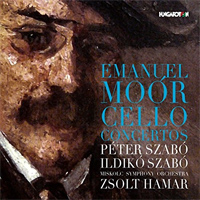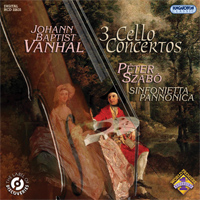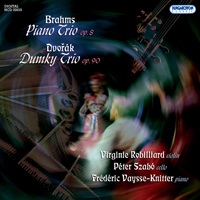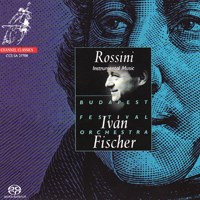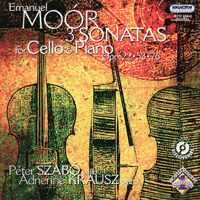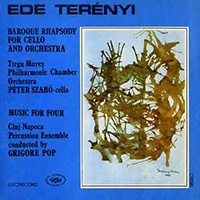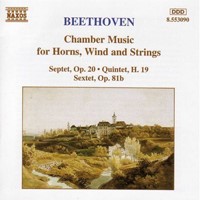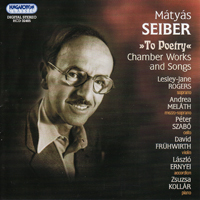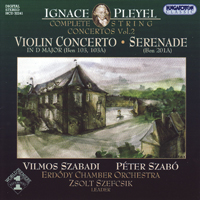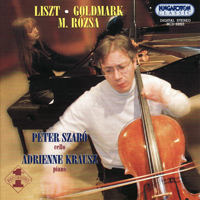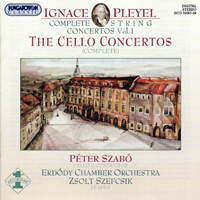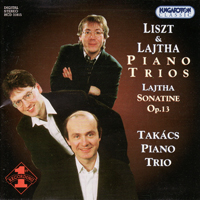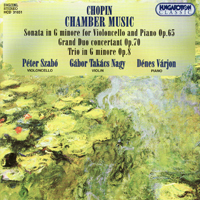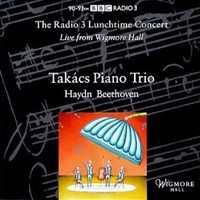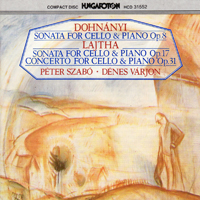Recording - Mátyás Seiber: "To Poetry"
Mátyás Seiber (1905-1960), after being a student of Kodaly at the Academy, spent 6 years in Germany and most of his later life in England. The compositions on this retrospective CD were so ingeniously selected that we feel they give a representative cross-section of the entire oeuvre.
It consists both of pieces from the time of his academic studies and later compositions of different styles: beside study pieces there are folk song adaptations, artistic songs, a dodecaphonic composition and a Spanish-colour musical joke. All in all we get to know a characterful composer from this album who left behind thought-provoking, exciting and genuine works and who deservedly obtained his master, Kodály’s high regard. He claimed already in 1925 that Seiber, walking in Mozart’s footsteps, was the one who reached the nearest to the pure style of chamber music.
The earliest piece on the disc was born in 1922, so the Sarabande and Gigue is the composition of a seventeen-year-old Music Academy student with cello dominant. This use of style, or rather, this sensation is a reflection of the young man’s Bach studies. Therefore it is difficult to say if the two-movement composition was written by someone with talent or what the young musician’s conception really was. If we approach it from his later works we may recognize some characteristics – such as his commitment to melodiousness, to follow Bach’s example and to play with musical styles – typical of the mature composer. The series of Petöfi songs composed between 1922 and 1924 can be regarded as slightly more independent compositions. But here the influence of Kodály’s works and concepts define everything. The choice of text already proves that: Seiber turns to the great Hungarian poet, Petöfi and composes music on his folk poems. His models were probably the compositions of Kodály and the series entitled ”Hungarian folk music” notwithstanding that the harmonies of the movements show a great resemblance to the new-style Hungarian folk songs and also evoke the folk music tradition.
The first composition on the disc which is independent in spirit and technique alike is the 1925 Sonata da camera for violin and cello. With this piece it is indeed the intention which dominates; Seiber shows for the first time what complex structures and modern sounds he is capable of creating – especially in the 2nd movement. Although the choice of instruments evidently refers back to the Kodály Duo, the style is in many aspects very close to Bartók’s Sonata for two violins and cello, composed only a couple of years earlier. However, the pairing of the slow and quick evokes the atmosphere of the Bartók rhapsodies. The constant presence of the two models shows us very clearly how shocking an experience Bartók’s and Kodály’s modernism must have been for their generation. Not only did it give them directions but it also made it nearly impossible to compose in any different way. Seiber also, in the spirit of modernism, almost shows off dissonances. Yet if we examine the fabric of the music more closely, we can notice a number of Neo-baroque elements as well. On the one hand, the themes are defined by sequence formulas in Baroque style, on the other, the two instruments create a consistent counterpoint for two voices (and the occasional polyphony of the strings broaden it further into three or occasionally four voices). From this we can reach the conclusion that in the background of Seiber’s contra-punctual thinking there was Ernst Kurth’s contra-punctual book on Bach (1917) which deals with the characteristics of one and two line contrapunts and the polyphony of string instruments and which Kodály often used in teaching in that time.
Although Mátyás Seiber, having had left his home in 1925, turned to new music like jazz with great interest and the West European environment must also have had a strong impact on him, he seems to have remained loyal to the Kodály and Bartók traditions even in the ‘40s. The Fantasy composed in 1940, which serves as a unique transition between the modern Western music and the Hungarian traditions, is a definite support for this view. Its atmosphere evokes Bartók’s Night music, and gives full ground to the lament topos so determinant in Hungarian music. Its sound is rather one of the modern music knowing no folk traditional roots – though not in terms of free twelve-note system or dodecaphony. Its harmonies, style and system of gestures are modern while its form is very much traditional (A-B-A form). At the same time, the fact that the folk song adaptations remained strong in his life-work demonstrate Seiber’s commitment to the Hungarian traditions. The far from traditional tonality of the Four Greek Folk Songs composed in 1942 show a striking familiarity with Hungarian folk music. In addition, the Hungarian scales and the short steps themes typical of the instrumental folk music also appear in some place; in others the Romanian elements known from the Bartók pieces receive emphasis. Seiber, following his models, constructs his cycle from the harmonic features of folk songs, principally from dissonances. (The semitone and the tritone play an important role particularly in the first song, in ”O, My Love” It also gives stress to other exotic marks of Greek tunes. in ”Each Time, My Love, O Your Eyes are Dark and Beautiful”.
Seiber composed music for the English version and not for the ones in original language, which indicates that his source might have been an English publication and also that the folk song adaptations preserved their connections, once present in Hungary, to the chansons of the cabaret theaters. While the folk song adaptations of Bartók and Kodály achieved a status in the high culture in Hungary, in Western Europe they seem to have remained part of a transitional musical practice; Seiber’s 1945 composition Four French Folk Songs also reinforces this. In the center of the French song adaptations, which are far more joyous and simple than the Greek ones, stands the emphasis on tonality and the establishment of translucent accompaniment. These songs are the best to point out the easy, unstrained manner of composition and the natural virtuosity which was Seiber’s own. The same ease can be found in the Introduction and Allegro (the dating is uncertain) written for cello and accordion. Here he transcribes a playful-funny Spanish-coloured composition while the accordion underlines the proximity of the cabaret genre.
But the To Poetry cycle of songs composed in 1952 and the Concert Piece for violin and piano dating from 1954 proves that Mátyás Seiber remained open for serious genres too, moreover, he faced the compositional methods referred to as radical of the time. This cycle of songs, dedicated to Peter Pears, were composed for poems by Goethe, Shakespeare, an anonymous poet and William Dunbar. Following the Schumann archetypes, the cycle is framed by the musical adaptation of the Goethe poem in English translation. The piece is characterized by a very expressive musical language and Seiber plays with the duality of tonality and chromaticism all the way through. This gives space for the modernity familiar from the Chamber Sonata to develop, but here in terms of a free twelve-note system. The modern harmonies merge with archaic elements; in the Tears movement, for example, the counterpoint conjures Bach and the ”Timor mortis” uses the tunes of the Dies irae. On the other hand, the Concert Piece, which appeared almost at the same time, experiments with creating a unique interpretation of the dodecaphony; the piece constructed from multiple short sections of form changes a twelve-note theme so that after the fifth form section he brings back the previous four in reverse order. As a matter of fact, this piece reveals a lot about Mátyás Seiber’s compositional habitus: he is not so much a constructive character as a free and intuitive person who nonetheless experiments with concepts, which may incidentally be far from his personality. In his works it is always the spirit of openness that dominates, irrespective of which period of his life’s work they were created in.
These interpretations have only confirmed my observation, namely that it is only via first class performances that less known composers can get discovered. All the contributors to the recording are first-class artists and they devote all their knowledge and talent to the quality shaping and mediation of the pieces. Zsuzsa Kollár provides an outstanding performance in all the five pieces that she plays in, not only as a dedicated and zestful piano accompaniment but also as an equal partner. I can only praise Péter Szabó for his intense, deeply felt and spirited cello performance as well as David Frühwirth for his careful and precise violin performance. Péter Szabó deserves extra credit for arranging the program of the CD and for assisting in its production. I found Lesley-Jane Rogers’s soprano less convincing: her obscure tone sharpening at high notes prevented her interpretation from the appearance of the natural intimacy and smooth self-expression that the other singer on the disc, Andrea Meláth so obviously possesses.
Anna Dalos
Source: www.muzsikalendarium.hu
Translation by Susan Kapás
Muzsika
April 2006


